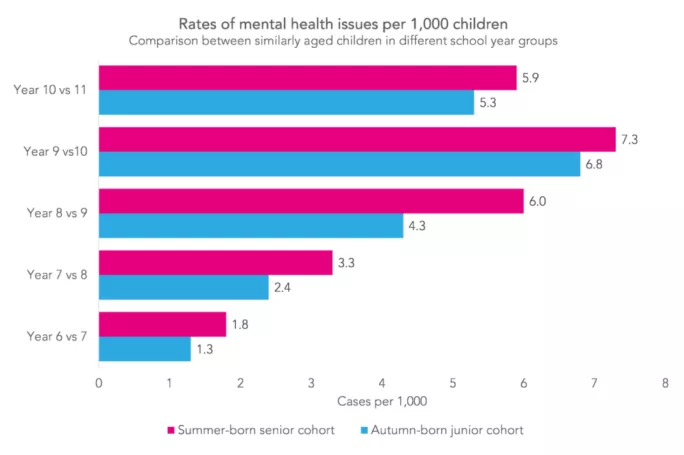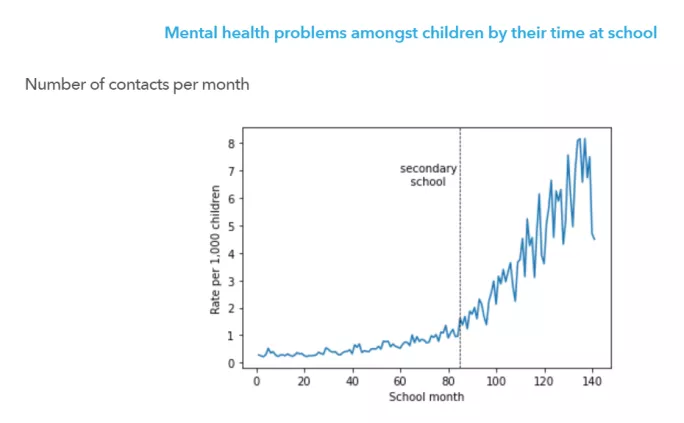Girls experience increasing mental health issues at secondary school compared with boys, according to new research.
John Jerrim, an education professor at UCL’s Institute of Education, has drawn on pre-pandemic data to explore the factors influencing pupils’ mental health.
News: Warning mental health crisis will block school catch-up
Mental health: Call for a £100m counselling in schools fund
Nadhim Zahawi: I’ll put wellbeing at the heart of schools policy
Here are his key findings, set out in a new blog for FFT Education Datalab.
Key findings on girls’ mental health in secondary school
Girls experience increasing mental health difficulties throughout secondary school compared with boys
Professor Jerrim’s analysis shows that girls have a steeper increase in mental health difficulties throughout their time in secondary school compared with boys.
He says there is a “much more appreciable increase” of girls facing mental health difficulties, up from around two per 1,000 children in Year 7 to around 10 per 1,000 children in Years 10/11.
Age is a bigger factor than year group for mental health
Professor Jerrim cites previous research that shows how being young compared with one’s school peers may be related to diagnoses such as attention deficit hyperactivity disorder (ADHD) and depression.
However, he finds that the impact of a pupil’s year group on their mental health is quite small compared to their age.
Similarly aged students in Year 11 (5.9) and Year 10 (5.3), for example, have relatively similar rates of mental health issues per 1,000 children, although the rate is somewhat higher for summer-born pupils who are young in the year than their autumn-born peers in the year below.
“The same holds true for the difference between Year 10 (7.3) and Year 9 (6.8) and, indeed, for most of the other comparisons made,” Professor Jerrim says.
“The only potential exception is for the comparison between Year 9 and Year 8, where some evidence of a sizable difference emerges.
“The evidence presented here therefore suggests that the impact of school year group upon young people’s mental health is minimal.
“The striking increase in mental health diagnoses and treatments presented at the beginning of this post are primarily being driven by differences in biological age.”
Pupils are more likely to experience mental health difficulties in secondary school
Contact with doctors regarding mental health issues increases sharply for students in secondary school.







